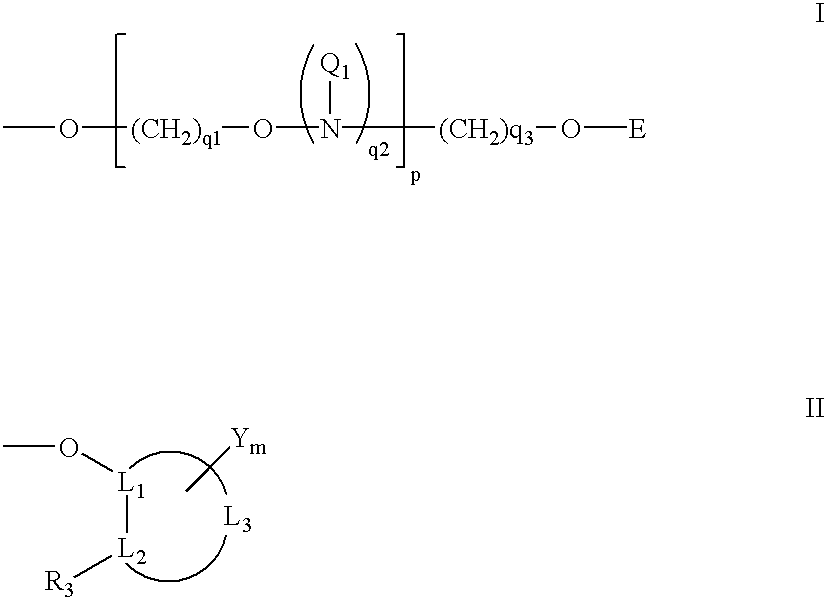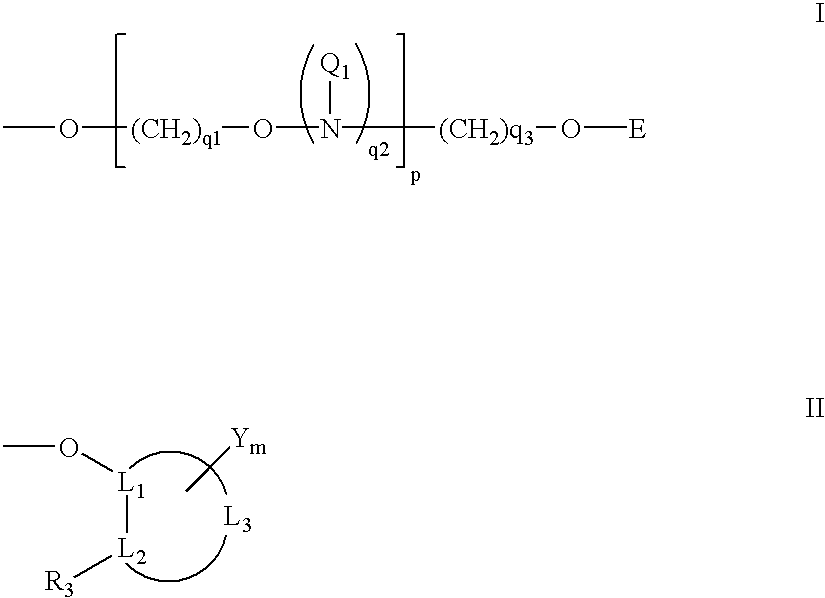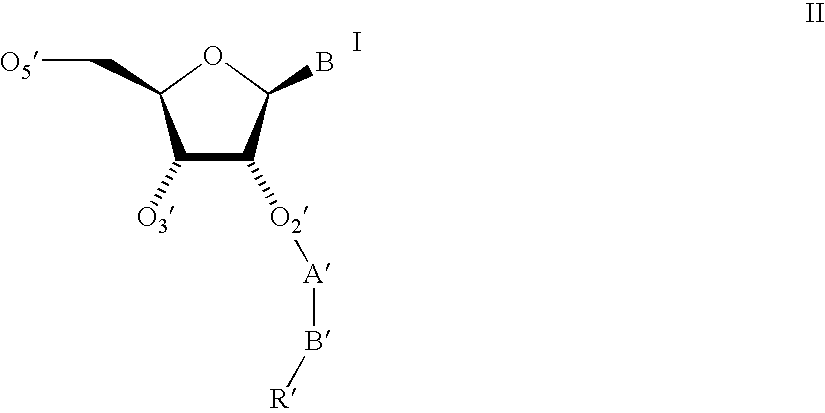Oligonucleotides having A-DNA form and B-DNA form conformational geometry
a conformational geometry and oligonucleotide technology, applied in the field of oligonucleotides, can solve the problems of reducing the binding affinity of antisense oligonucleotides, reducing hybrid stability, and reducing the effect of antisense oligonucleotides, so as to improve the binding affinity and nuclease resistance
- Summary
- Abstract
- Description
- Claims
- Application Information
AI Technical Summary
Benefits of technology
Problems solved by technology
Method used
Image
Examples
example 1
5′-O-DMT-2′-O-(2-methoxyethyl)-5-methyl uridine and 5′-O-DMT-3′-O-(2-methoxyethyl)5-methyl uridine
[0153]2′,3′-O-dibutylstannylene 5-methyl uridine (345 g) (prepared as per: Wagner et al., J. Org. Chem., 1974, 39, 24) was alkylated with 2-methoxyethyl bromide (196 g) in the presence of tetrabutylammonium iodide (235 g) in DMF (3 L) at 70° C. to give a mixture of 2′-O- and 3′-O-(2-methoxyethyl)-5-methyl uridine (150 g) in nearly 1:1 ratio of isomers. The mixture was treated with DMT chloride (110 g, DMT-Cl) in pyridine (1 L) to give a mixture of the 5′-O-DMT-nucleosides. After the standard work-up the isomers were separated by silica gel column chromatography. The 2′-isomer eluted first, followed by the 3′-isomer.
example 2
5′-O-DMT-3′-O-(2-methoxyethyl)-5-methyl-uridine-2′-O-(2-cyanoethyl-N,N-diisopropyl)phosphoramidite
[0154]5′-O-DMT-3′-O-(2-methoxyethyl)-5-methyluridine (5 g, 0.008 mol) was dissolved in CH2Cl2 (30 mL) and to this solution, under argon, diisopropylaminotetrazolide (0.415 g) and 2-cyanoethoxy-N,N-diisopropyl phosphoramidite (3.9 mL) were added. The reaction was stirred overnight. The solvent was evaporated and the residue was applied to silica column and eluted with ethyl acetate to give 3.75 g title compound.
example 3
5′-O-DMT-3′-O-methoxyethyl)-N4-benzoyl-5-methyl-cytidine
[0155]5′-O-DMT-3′-O-(2-methoxyethyl)-5-methyl uridine (15 g) was treated with 150 mL anhydrous pyridine and 4.5 mL of acetic anhydride under argon and stirred overnight. Pyridine was evaporated and the residue was partitioned between 200 mL of saturated NaHCO3 solution and 200 mL of ethylacetate. The organic layer was dried (anhydrous MgSO4) and evaporated to give 16 g of 2′-acetoxy-5′-O-(DMT)-3′-O-(2-methoxyethyl)-5-methyl uridine.
[0156]To an ice-cold solution of triazole (19.9 g) in triethylamine (50 mL) and acetonitrile (150 mL), with mechanical stirring, 9 mL of POCl3 was added dropwise. After the addition, the ice bath was removed and the mixture stirred for 30 min. The 2′-acetoxy-5′-O-(DMT)-3′-O-(2-methoxyethyl)-5-methyl uridine (16 g in 50 mL CH3CN) was added dropwise to the above solution with the receiving flask kept at ice bath temperatures. After 2 hrs, TLC indicated a faster moving nucleoside, C-4-triazole-derivativ...
PUM
| Property | Measurement | Unit |
|---|---|---|
| Molar density | aaaaa | aaaaa |
| Fraction | aaaaa | aaaaa |
| Fraction | aaaaa | aaaaa |
Abstract
Description
Claims
Application Information
 Login to View More
Login to View More - R&D
- Intellectual Property
- Life Sciences
- Materials
- Tech Scout
- Unparalleled Data Quality
- Higher Quality Content
- 60% Fewer Hallucinations
Browse by: Latest US Patents, China's latest patents, Technical Efficacy Thesaurus, Application Domain, Technology Topic, Popular Technical Reports.
© 2025 PatSnap. All rights reserved.Legal|Privacy policy|Modern Slavery Act Transparency Statement|Sitemap|About US| Contact US: help@patsnap.com



